When it comes to sourcing products, especially in today’s competitive market, China has become the go-to destination for businesses of all sizes. As the world’s manufacturing powerhouse, China offers unmatched advantages for entrepreneurs looking to expand their product lines, reduce manufacturing costs, and gain access to high-quality products.
China has firmly established itself as the global leader in manufacturing. In fact, it produces around 28% of the world’s goods, from electronics and textiles to machinery and automotive parts (according to McKinsey & Company’s report China and the World: Inside the Dynamics of a Changing Relationship (2020). With millions of factories and suppliers spread across the country, the sheer volume of options available makes it easier than ever for businesses to find exactly what they need at competitive prices.
The primary industries sourcing from China include consumer electronics, textiles, automotive parts, machinery, and data center components. Whether you’re a startup trying to launch your first product or an established business looking to scale, China offers a wealth of opportunities.
At Gaia Sourcing, we specialize in sourcing consumer electronics, data center electronics, and liquid cooling systems, leveraging China’s extensive network of suppliers to streamline the sourcing process. The abundance of manufacturers in China makes it not only quick but cost-effective, compared to sourcing from other regions. By tapping into this vast ecosystem, we help our clients source quality products at the right price point, while also ensuring efficient delivery timelines.
However, like any business venture, sourcing from China comes with its own set of challenges. From navigating communication barriers to managing logistics and ensuring quality, knowing how to navigate the Chinese supply chain is key to success.
Topic 1: Understanding China’s Manufacturing Landscape
When you think of China’s manufacturing prowess, you might imagine massive factories and bustling industrial zones. But what really sets China apart is the way entire regions and even cities specialize in specific types of products. My business partner, Andy, and I are constantly amazed by how certain places focus entirely on a single product or industry—what we like to call “One City, One Product.”
Take Zhongshan, for example. On a recent trip, we discovered it’s a hub for steel pipe and valve production. This specialization is far from unique Shenzhen is famous for electronics, Zhejiang for textiles, and Jiangsu for machinery. These regions have become experts in their respective industries, which makes finding quality suppliers much easier.
China’s manufacturing is evolving rapidly with trends like automation and intelligent manufacturing. Many factories are now using robotics and AI to streamline production, reduce costs, and improve quality. This is especially relevant for industries like electronics and technology, where precision and speed are key.
Another important shift is China’s growing focus on ESG practices and sustainability. More manufacturers are adopting greener processes, from energy-efficient factories to waste reduction initiatives, making sourcing from China more sustainable than ever.
By understanding China’s regional specializations and trends, you can source products more effectively. Whether you’re looking for high-tech gadgets, industrial parts, or sustainable goods, China’s diverse manufacturing landscape has you covered.
Topic 2: Finding Reliable Suppliers in China
When sourcing from China, you’ll encounter different types of suppliers: factories, trading companies, and OEM/ODM providers. Factories are direct manufacturers, while trading companies act as intermediaries, often providing a wider range of products. OEM (Original Equipment Manufacturer) and ODM (Original Design Manufacturer) suppliers can create custom products or designs based on your specifications.
To find suppliers, platforms like Alibaba, Made-in-China, and Global Sources are great starting points. These websites allow you to browse thousands of suppliers, read reviews, and compare products. Trade shows are also valuable for meeting suppliers face-to-face and checking out their products in person. Direct outreach via email or phone is another effective way to start building relationships.
When evaluating suppliers, consider key factors like certifications, factory visits, and product samples. Certifications ensure the supplier meets international quality standards, while factory visits provide a firsthand look at their operations and working conditions. Always request product samples to verify the quality of what you’ll be getting.
Building a shortlist of reliable suppliers involves evaluating their capabilities, reputation, and pricing. You’ll want to ensure they can handle your order volumes, deliver on time, and offer competitive pricing while maintaining quality.
At Gaia Sourcing, we specialize in sourcing telecommunications hardware, data center hardware, and consumer electronics, helping clients find reliable suppliers that meet their specific needs.
Topic 3: Navigating Communication and Cultural Differences
Effective communication with Chinese suppliers goes beyond language. It’s about understanding local business etiquette, respecting cultural nuances, and dealing with time zone differences. In China, business relationships are built on trust and respect, so it’s important to take time to cultivate strong, long-term partnerships.
One of the challenges when working with less experienced international suppliers is that while they may offer lower prices, better customization options, and more flexibility, communication can be difficult. To avoid miscommunication, always double-check and triple-check every detail in your specifications documents. Ensure all points are clear and agreed upon.
Negotiation in China is a delicate balance between respect and firmness. While it’s tempting to rush through the deal, take the time to understand the supplier’s perspective and establish mutual trust.
Video calls are a great way to build a personal connection, even if there’s a language barrier. Establishing rapport through face-to-face communication, even virtually, helps strengthen the working relationship.
If you’re struggling with language barriers, working with a sourcing agent or third-party intermediary can simplify communication and ensure your needs are clearly understood. At Gaia Sourcing, we work closely with suppliers to help navigate these challenges and ensure smooth communication from start to finish.
Topic 4: Managing Quality Control and Inspections
When sourcing from China, quality control is non-negotiable. Whether you’re producing consumer electronics or industrial parts, you need to ensure your product meets international standards. Quality decay is a common pitfall—over time, as relationships with suppliers mature, complacency can set in, and standards may slip. Materials might change, or quality could decline to cut costs. This is why constant oversight is essential.
A solid quality control process starts with pre-production samples. These allow you to verify that your product meets your expectations before mass production begins. During production, in-line inspections ensure that the product is being made to specification, and final product checks verify the finished goods meet the agreed-upon standards.
Working with a third-party inspection company can be a game-changer. These companies can conduct random inspections at various stages of production, giving you an unbiased, professional assessment. If you have ongoing sourcing needs, hiring a dedicated quality manager in China can provide even more control and oversight.
It’s crucial to set clear quality standards and performance expectations in your contract with the supplier. This ensures that everyone is aligned on what’s expected and provides you with leverage if quality issues arise.
At Gaia Sourcing, we emphasize the importance of regular quality checks to ensure the products meet your standards and avoid costly mistakes down the road.
Topic 5: Understanding Pricing and Lead Times
When sourcing from China, pricing is influenced by several factors: raw materials, labor costs, exchange rates, and production volumes. The more products you order, the lower the price per unit tends to be, as manufacturers can benefit from economies of scale.
Negotiating with suppliers is key to getting the best deal. Discuss payment terms, minimum order quantities (MOQs), and shipping costs up front. Make sure to clarify these points to avoid any surprises later.
Lead times can be tricky, as suppliers may give vague or conservative estimates to cover potential delays in the supply chain. To manage this, break the manufacturing process into smaller milestones. Check in with your supplier at each milestone to get updates on production and ensure timelines stay on track.
It’s also important to build contingencies into your contracts. This helps protect you against fluctuations in costs and delivery times, giving you a buffer if things don’t go according to plan.
At Gaia Sourcing, we work closely with suppliers to manage both pricing and lead time, ensuring smooth production and delivery to meet your business needs.
Topic 6: Logistics and Shipping: How to Get Your Products from China
When shipping from China, choosing the right shipping method is crucial. The most common options include air freight (fast but costly), sea freight (more affordable for large shipments), rail (ideal for central and eastern Europe), and express delivery (best for small, urgent shipments). Your choice depends on your budget, time constraints, and shipment size.
Shipping costs are influenced by factors like weight, volume, distance, and the chosen shipping method. Be sure to get quotes from several freight forwarders to compare options and find the best deal for your business.
Understanding customs and import duties is essential. Each country has different tariffs, taxes, and import regulations. Failure to navigate these correctly can lead to unexpected costs and delays. Always research the specific import requirements for your destination market.
To streamline the process and ensure compliance, partner with a freight forwarder and customs broker. These professionals manage the logistics and paperwork, making sure your products reach their destination smoothly and in compliance with all regulations.
At Gaia Sourcing, we help our clients navigate the complexities of logistics and shipping, ensuring timely delivery and cost-effective solutions.
Topic 7: Legal and Contractual Considerations
When sourcing from China, having a solid sourcing contract is crucial. Key elements include payment terms, delivery schedules, and penalties for non-compliance. These terms ensure that both parties are aligned and understand their responsibilities.
Intellectual property (IP) protection is another critical consideration. While China has improved its IP laws, it’s still important to take steps to safeguard your designs. Consider registering patents, trademarks, and copyrights to protect your products. For projects involving unique IP, a non-disclosure agreement (NDA) is essential to prevent unauthorized sharing or copying.
Be aware of China’s labor laws, safety regulations, and environmental requirements. These laws are constantly evolving, so it’s important to ensure that your supplier complies with all relevant regulations, particularly when it comes to worker safety and environmental impact.
If disputes arise, understanding how to resolve them is key. The Chinese legal system can be complex, but most disputes are settled through alternative dispute resolution (ADR) methods such as mediation or arbitration. Clearly outlining dispute resolution procedures in your contract can help avoid lengthy and costly legal battles.
At Gaia Sourcing, we guide our clients through these legal complexities to ensure smooth and secure sourcing.
Conclusion
Sourcing from China offers businesses the opportunity to access high-quality products at competitive prices, but it requires careful planning, communication, and due diligence. From understanding China’s manufacturing landscape to managing quality control and navigating logistics, each step in the process plays a key role in ensuring a successful outcome.
Building strong, long-term relationships with the right suppliers is crucial for ongoing success. By focusing on clear communication, thorough negotiation, and strategic planning for costs and logistics, businesses can avoid common pitfalls and maintain control over their supply chains.
The sourcing process can be complex, but with the right approach and expertise, it can also be highly rewarding. If you’re looking for expert guidance on navigating these challenges, Gaia Sourcing is here to help. Our extensive experience and network of trusted suppliers make us the ideal partner to streamline your sourcing process and help you achieve your business goals.
Contact us today to learn how we can support you in sourcing from China with confidence and ease.







